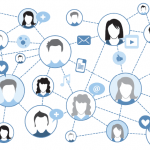“It’s a huge part of my life,” he says. “It allows people to have asynchronous conversations. Allowing progress to occur without scheduling dedicated time is tremendously important … the most important conversations are [still] held face to face, but so much happens between those major decisions. It’s how to make all the small decisions. It’s hundreds of emails later every day [that] allows projects to move forward.”
Once the research is done, however, Dr. Solomon uses Twitter to promote it. There he sees value in the new technologies that can put research in front of people other than the dedicated readers of Arthritis Care & Research and Arthritis & Rheumatology.
“As a researcher, we’re constantly trying to get our research findings out to a broader community and trying to make sure academic journals are [not] the only way to get the word out,” he adds. “The use of social media in the research space has grown tremendously over the past five or 10 years … allowing us to broaden the reach of science.”
Bells & Whistles
So if rheumatologists and communications experts believe email retains a place in the way information is conveyed, why is the question of its impending death a continuing parlor game for some?
“Because there’s always something new,” Mr. Moore says. “Because Messenger on Facebook looks a little bit flashier than email. Because now we have Periscope. Now we have Twitter. Now we have different types of platforms that message within each other. They all look flashier.”
In essence, each is simply a somewhat more modernized version. More bells and whistles, Mr. Moore says. He likes to compare it to the U.S. Postal Service. As technology progressed and communication became more real time in ways well beyond telephone conversations, many pundits forecast the end of what is derisively called snail mail, itself an admission of the speed and efficacy of electronic mail.
“You could make the analogy between the death of
and the death of the U.S. mail,” Mr. Moore says. “Ten years ago, people were writing about the death of the U.S. mail. And it certainly changed, and yes, there are fewer letters and less traffic and fewer parcels that the post office sends. But it’s still there. It’s not going away; it’s just adapting in a certain way. If you want to pinpoint a time that there is ‘the death of email,’ I think the death of the U.S. mail comes before it.”

